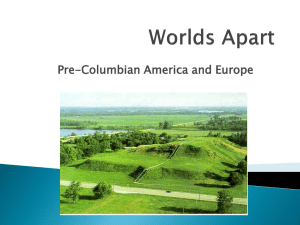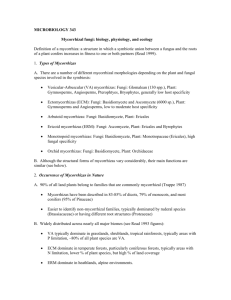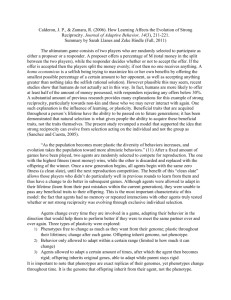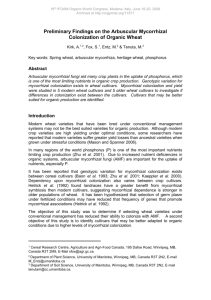Does mycorrhizal colonization elicit fine root trait plasticity?
advertisement
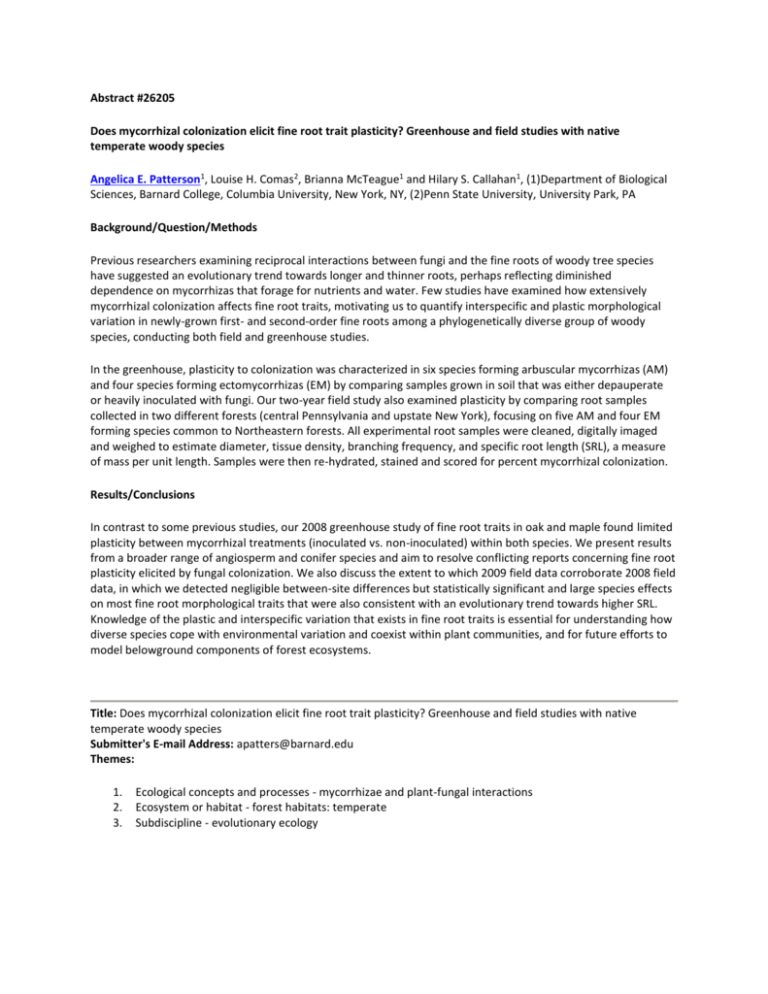
Abstract #26205 Does mycorrhizal colonization elicit fine root trait plasticity? Greenhouse and field studies with native temperate woody species Angelica E. Patterson1, Louise H. Comas2, Brianna McTeague1 and Hilary S. Callahan1, (1)Department of Biological Sciences, Barnard College, Columbia University, New York, NY, (2)Penn State University, University Park, PA Background/Question/Methods Previous researchers examining reciprocal interactions between fungi and the fine roots of woody tree species have suggested an evolutionary trend towards longer and thinner roots, perhaps reflecting diminished dependence on mycorrhizas that forage for nutrients and water. Few studies have examined how extensively mycorrhizal colonization affects fine root traits, motivating us to quantify interspecific and plastic morphological variation in newly-grown first- and second-order fine roots among a phylogenetically diverse group of woody species, conducting both field and greenhouse studies. In the greenhouse, plasticity to colonization was characterized in six species forming arbuscular mycorrhizas (AM) and four species forming ectomycorrhizas (EM) by comparing samples grown in soil that was either depauperate or heavily inoculated with fungi. Our two-year field study also examined plasticity by comparing root samples collected in two different forests (central Pennsylvania and upstate New York), focusing on five AM and four EM forming species common to Northeastern forests. All experimental root samples were cleaned, digitally imaged and weighed to estimate diameter, tissue density, branching frequency, and specific root length (SRL), a measure of mass per unit length. Samples were then re-hydrated, stained and scored for percent mycorrhizal colonization. Results/Conclusions In contrast to some previous studies, our 2008 greenhouse study of fine root traits in oak and maple found limited plasticity between mycorrhizal treatments (inoculated vs. non-inoculated) within both species. We present results from a broader range of angiosperm and conifer species and aim to resolve conflicting reports concerning fine root plasticity elicited by fungal colonization. We also discuss the extent to which 2009 field data corroborate 2008 field data, in which we detected negligible between-site differences but statistically significant and large species effects on most fine root morphological traits that were also consistent with an evolutionary trend towards higher SRL. Knowledge of the plastic and interspecific variation that exists in fine root traits is essential for understanding how diverse species cope with environmental variation and coexist within plant communities, and for future efforts to model belowground components of forest ecosystems. Title: Does mycorrhizal colonization elicit fine root trait plasticity? Greenhouse and field studies with native temperate woody species Submitter's E-mail Address: apatters@barnard.edu Themes: 1. 2. 3. Ecological concepts and processes - mycorrhizae and plant-fungal interactions Ecosystem or habitat - forest habitats: temperate Subdiscipline - evolutionary ecology




